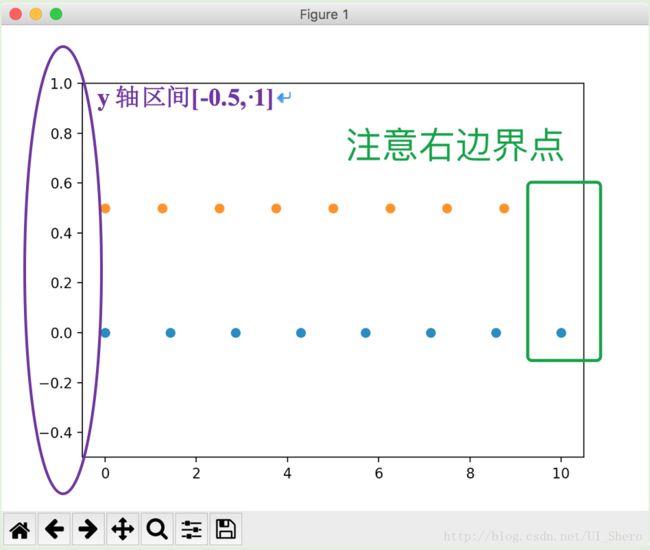| Signature: np.linspace(start, stop, num=50, endpoint=True, retstep=False, dtype=None) Docstring: Return evenly spaced numbers over a specified interval. Returns `num` evenly spaced samples, calculated over the interval [`start`, `stop`]. The endpoint of the interval can optionally be excluded. Parameters ---------- start : scalar #scalar:标量 The starting value of the sequence. stop : scalar The end value of the sequence, unless `endpoint` is set to False. In that case, the sequence consists of all but the last of ``num + 1`` evenly spaced samples, so that `stop` is excluded. Note that the step size changes when `endpoint` is False. num : int, optional #oprional:可选项 Number of samples to generate. Default is 50. Must benon-negative. endpoint : bool, optional #是否包括右边界点 If True, `stop` is the last sample. Otherwise, it is not included. Default is True. retstep : bool, optional #返回步长
| np.linspace(2.0, 3.0, num=5, retstep=True) (array([ 2. , 2.25, 2.5 , 2.75, 3. ]),0.25) np.linspace(2.0, 3.0, num=5) array([ 2. , 2.25, 2.5 , 2.75, 3. ]) np.linspace(2.0, 3.0, num=5, endpoint=False) array([ 2. , 2.2, 2.4, 2.6, 2.8]) |
If True, return (`samples`, `step`), where `step` is the spacing between samples. dtype : dtype, optional The type of the output array. If `dtype` is not given, infer the data type from the other input arguments.
| # Graphical illustration: import numpy as np import matplotlib.pyplot as plt N = 8 y = np.zeros(N) x1 = np.linspace(0, 10, N, endpoint=True) x2 = np.linspace(0, 10, N, endpoint=False) plt.plot(x1, y, 'o') plt.plot(x2, y + 0.5, 'o') plt.ylim([-0.5, 1]) #设置y轴区间 (-0.5, 1) plt.show() |
 |
|

